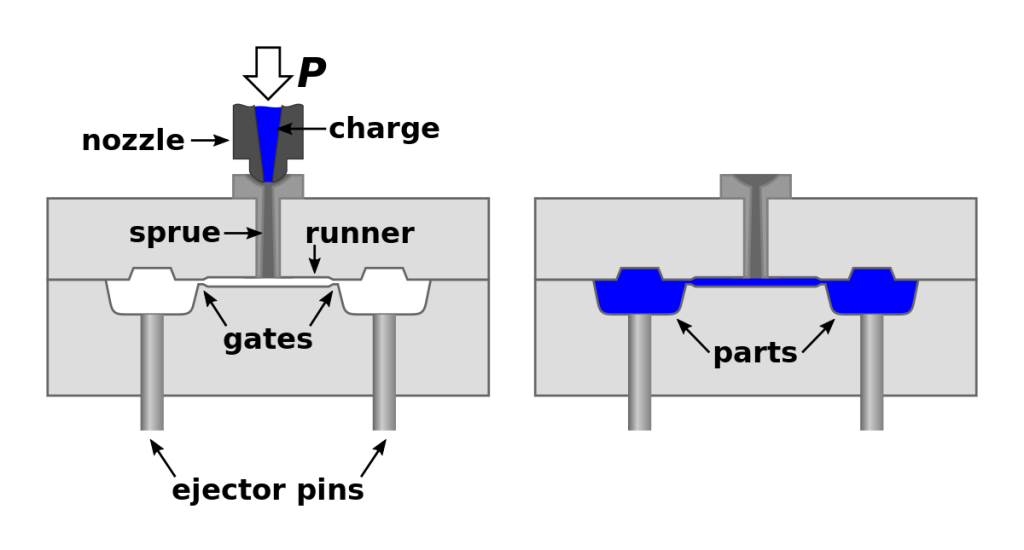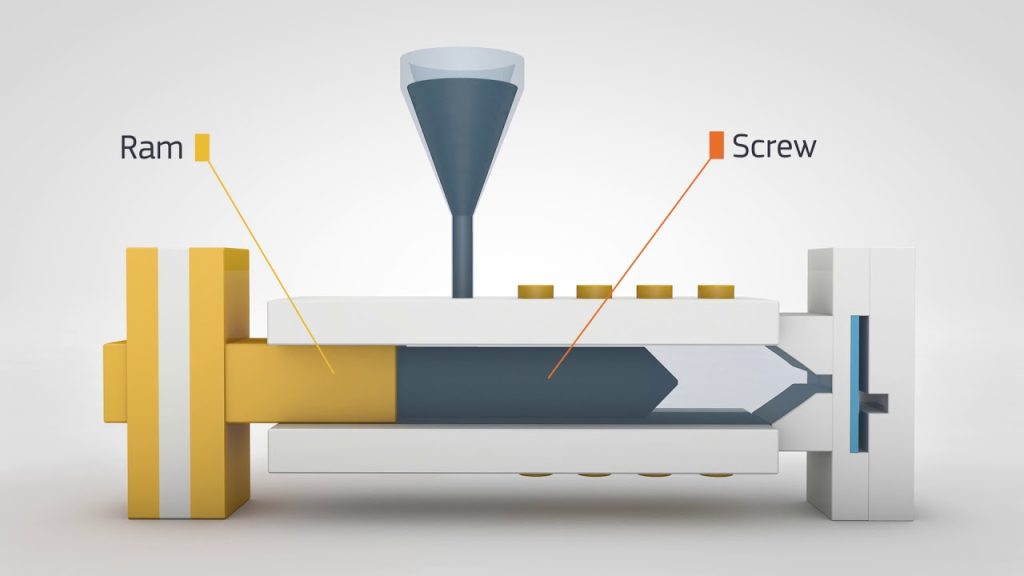Table of Contents
- Frequently Asked Questions
- What Causes Bubbles in Injection Molding?
- How Can Bubbles be Detected in Injection-Molded Parts?
- What Are the Consequences of Bubbles in Injection-Molded Parts?
- What Are the Solutions to Get Rid of Bubbles in Injection Molding?
- What Are the Best Practices to Prevent the Formation of Bubbles in Injection Molding?
Injection molding is a widely used manufacturing process for creating various plastic products. However, one of the most common issues faced during the process is the appearance of bubbles or voids in the final product. These bubbles not only impact the aesthetic appeal of the product but also weaken its structural integrity. So, how do you get rid of bubbles in injection molding?
In this article, we will explore some effective methods to eliminate bubbles in injection molding. From adjusting temperature and pressure settings to optimizing the mold design, we will cover everything you need to know to ensure a smooth and bubble-free injection molding process. So, let’s dive in and discover the secrets of producing high-quality plastic products through injection molding.
If you’re experiencing bubbles in your injection molding, there are a few things you can try to get rid of them. First, check your mold design and make sure it’s vented properly. You can also adjust your injection speed, pressure, and temperature to minimize the chance of bubbles forming. Additionally, make sure you’re using the right type of resin for your project and that it’s dried properly. Finally, try adjusting your mold temperature or using a mold release agent to see if that helps. By following these steps, you should be able to eliminate bubbles in your injection molding.
How to Get Rid of Bubbles in Injection Molding?
Bubbles in injection molding can be a frustrating and costly problem. These bubbles can lead to weak or defective parts, resulting in production delays and additional costs. In this article, we will discuss the causes of bubbles in injection molding and offer tips and solutions to help you get rid of them.
Causes of Bubbles in Injection Molding
Bubbles in injection molding can be caused by a variety of factors, including:
- Poor material selection
- Inadequate mold design
- Inconsistent melt temperature
- Inconsistent injection speed or pressure
- Inadequate venting
Material Selection: Choosing the correct material for injection molding is crucial for producing parts without bubbles. If the material is not suitable for the application or is of low quality, it will result in parts with bubbles.
Mold Design: The mold design should be optimized for the material and application. Poor mold design can lead to trapped air, resulting in bubbles.
Melt Temperature: Inconsistent melt temperature can cause bubbles in the parts. The melt temperature should be optimized for the material and application.
Injection Speed and Pressure: Inconsistent injection speed or pressure can also lead to bubbles in the parts. The injection speed and pressure should be optimized for the material and application.
Venting: Inadequate venting can cause trapped air in the mold, resulting in bubbles.
Solutions for Getting Rid of Bubbles in Injection Molding
Here are some tips and solutions for getting rid of bubbles in injection molding:
- Optimize the melt temperature for the material and application.
- Optimize the injection speed and pressure for the material and application.
- Improve venting in the mold.
- Use a higher-quality material that is suitable for the application.
- Improve the mold design to eliminate trapped air.
- Reduce the amount of regrind material used in the process.
- Reduce the cycle time of the process to reduce the chance of trapped air.
- Use a vacuum or gas-assisted injection molding process.
Benefits of Getting Rid of Bubbles in Injection Molding:
There are several benefits of getting rid of bubbles in injection molding, including:
- Improved part quality
- Reduced production delays and costs
- Increased customer satisfaction
- Improved overall process efficiency
Injection Molding with and without Bubbles:
Injection molding with bubbles can result in weak or defective parts, leading to production delays and additional costs. On the other hand, injection molding without bubbles results in high-quality parts that meet the required specifications.
Conclusion
Bubbles in injection molding can be a frustrating and costly problem, but they can be prevented by optimizing the melt temperature, injection speed and pressure, and improving venting in the mold. Using a higher-quality material that is suitable for the application and improving the mold design can also help eliminate trapped air and prevent bubbles. By getting rid of bubbles in injection molding, you can improve part quality, reduce production delays and costs, and increase customer satisfaction.
Frequently Asked Questions
Injection molding is a complex process that involves several stages. One of the most common problems that manufacturers face during injection molding is the formation of bubbles. In this section, we will answer some of the most frequently asked questions about how to get rid of bubbles in injection molding.
What Causes Bubbles in Injection Molding?
Bubbles can form in injection-molded parts due to a variety of reasons. One of the most common causes of bubbles is the presence of moisture in the material. When the material is heated, the moisture turns into steam and creates bubbles in the part. Another cause of bubbles is the use of low-quality material or improper mixing of the material. In some cases, bubbles can also form due to the design of the mold or the injection molding machine settings.
To prevent bubbles from forming, it is essential to use high-quality material and ensure that it is properly dried before the injection molding process. The mold design and machine settings should also be optimized to prevent the formation of bubbles.
How Can Bubbles be Detected in Injection-Molded Parts?
Bubbles can be detected in injection-molded parts by inspecting the surface of the part. If there are any visible voids or air pockets, it is a sign that there are bubbles present in the part. In some cases, bubbles may be visible only when the part is cut open. If the part is critical, it is recommended to perform non-destructive testing to detect the presence of bubbles.
To prevent the formation of bubbles, it is essential to use high-quality material and ensure that it is properly dried before the injection molding process. The mold design and machine settings should also be optimized to prevent the formation of bubbles.
What Are the Consequences of Bubbles in Injection-Molded Parts?
The presence of bubbles in injection-molded parts can have several consequences. It can weaken the mechanical properties of the part, reduce its lifespan, and affect its appearance. Bubbles can also cause the part to warp or crack, leading to product failure. In some cases, bubbles can also affect the functionality of the part, leading to safety issues.
To prevent the formation of bubbles, it is essential to use high-quality material and ensure that it is properly dried before the injection molding process. The mold design and machine settings should also be optimized to prevent the formation of bubbles.
What Are the Solutions to Get Rid of Bubbles in Injection Molding?
To get rid of bubbles in injection molding, several solutions can be implemented. One of the most effective solutions is to use a vacuum dryer to dry the material before the injection molding process. Another solution is to use a mold with a venting system that allows air to escape during the injection molding process. Adjusting the injection molding machine settings, such as the temperature and pressure, can also help prevent the formation of bubbles.
To prevent the formation of bubbles, it is essential to use high-quality material and ensure that it is properly dried before the injection molding process. The mold design and machine settings should also be optimized to prevent the formation of bubbles.
What Are the Best Practices to Prevent the Formation of Bubbles in Injection Molding?
Preventing the formation of bubbles in injection molding requires following some best practices. First, it is essential to use high-quality material and ensure that it is properly dried before the injection molding process. Second, the mold design should be optimized to minimize the risk of bubbles. Third, the injection molding machine settings, such as temperature and pressure, should be adjusted to prevent the formation of bubbles. Finally, it is recommended to perform regular inspections and testing to detect and address any issues with the injection molding process.
To prevent the formation of bubbles, it is essential to use high-quality material and ensure that it is properly dried before the injection molding process. The mold design and machine settings should also be optimized to prevent the formation of bubbles.
In conclusion, getting rid of bubbles in injection molding is essential to ensure the production of high-quality plastic parts. By understanding the causes of bubbles and following the right procedures, you can minimize or even eliminate bubbles in your injection molding process.
Firstly, make sure to maintain the correct temperature, pressure, and cooling time during the injection molding process. Secondly, use high-quality raw materials and avoid overpacking the mold. Lastly, consider using vacuum-assisted injection molding or gas-assisted injection molding to reduce the likelihood of bubbles forming.
By implementing these tips and tricks, you can improve the quality of your injection molded products and reduce the need for costly rework. So, take the time to analyze your process and make the necessary adjustments, and you’ll soon be on your way to producing flawless plastic parts.
Request a quote today!
[contact-form-7 id="1578" title="Contact form"]
Please compress the file into a ZIP or RAR file before uploading. Alternatively, send through your RFQ by email.
enquires@unitymanufacture.com





